Beyond the Bob: The Evolution of Short Haircuts for Women | From Pixies to Mixies
The Enduring Allure of the Short Cut: More Than Just a Hairstyle
For over a century, short haircuts for women have been more than just a stylistic choice; they have been a declaration. From the revolutionary bob of the 1920s to the edgy pixies and fluid mixies of today, chopping one's hair has consistently symbolized liberation, confidence, and a rejection of conformity. While the classic bob remains an iconic silhouette, the world of short hair has evolved into a breathtakingly diverse landscape of shapes, textures, and attitudes. This journey is a reflection of our changing culture, a testament to the power of a haircut to define an era and empower an individual.
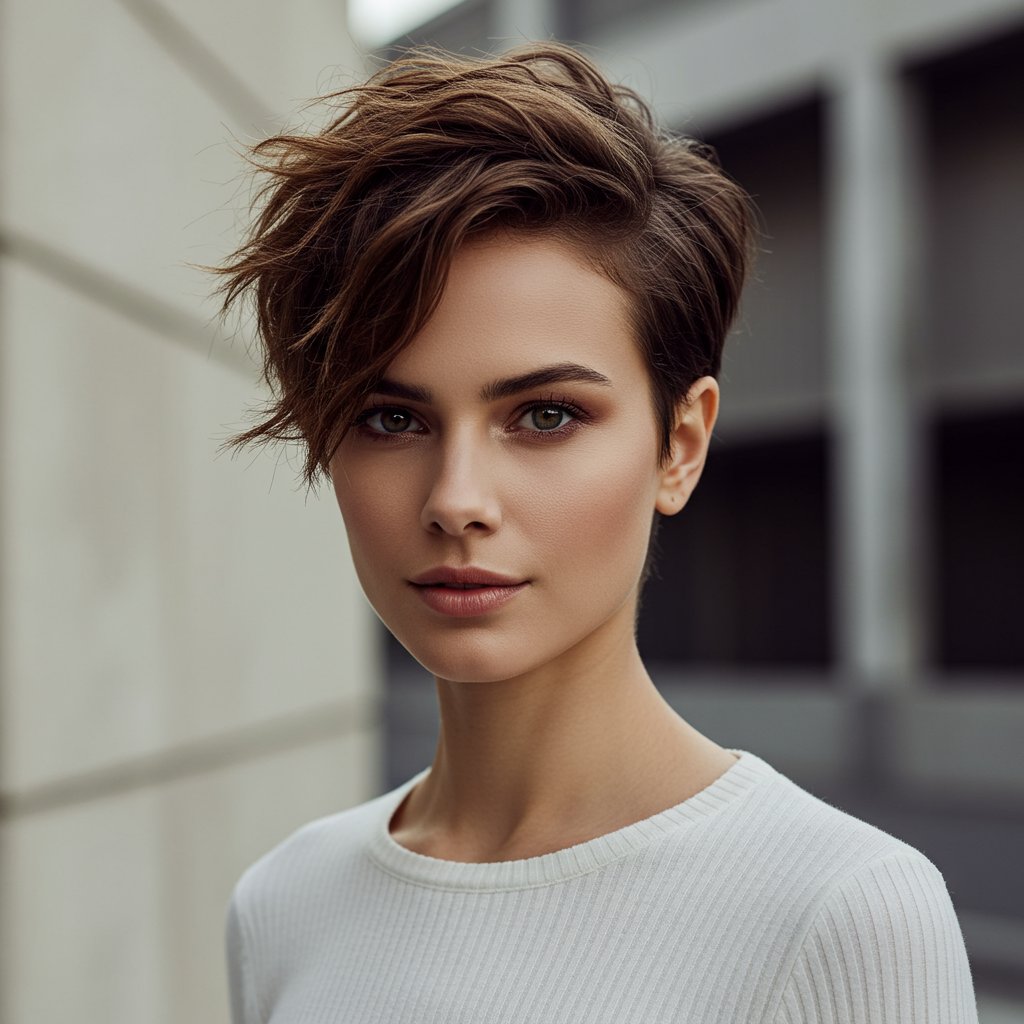
This comprehensive guide explores the fascinating evolution of short haircuts for women, moving far beyond the traditional bob. We'll trace the lineage of iconic styles, from the geometric precision of the swinging sixties to the rebellious punk spikes of the eighties and the personalized, texture-forward cuts of the modern day. Understanding this history not only provides inspiration but also highlights the incredible versatility and timeless appeal of short hair. Whether you're contemplating your first big chop or looking to update your current short style, join us as we delve into the stories, techniques, and trends that have shaped the world of short hair.
The Roaring Twenties: The Bob as a Symbol of Rebellion
The story of modern short hair begins with a bang—or rather, a bob. In the wake of World War I, the world was ready for a change, and women were at the forefront of this cultural shift. The flapper emerged as the icon of the Roaring Twenties, and her signature look was the sharp, jaw-grazing bob. This wasn't just a haircut; it was a radical act. For centuries, long hair had been the standard of femininity. Cutting it short was a direct challenge to Victorian ideals, a bold statement of newfound independence, social mobility, and a desire to participate in a fast-paced modern world.
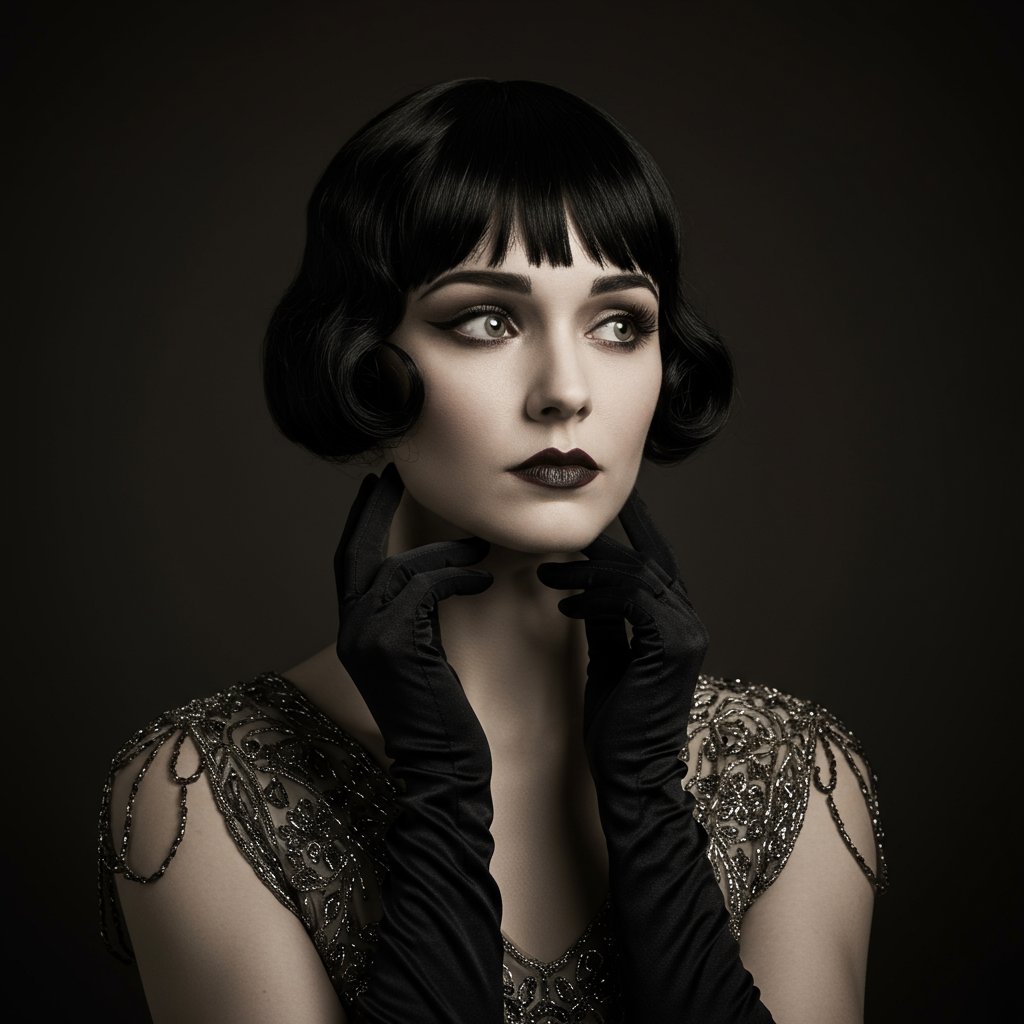
Celebrities of the era, like silent film star Louise Brooks with her severe, helmet-like bob and dancer Irene Castle, who popularized the style for its practicality, turned the haircut into a global phenomenon. The classic bob was often styled with sharp lines, deep side parts, and sleek finger waves, showcasing the technical skill of hairdressers. It was versatile, too—worn straight and severe, softened with waves, or accessorized with ornate headbands for evening glamour. The bob of the 1920s laid the foundation for all short haircuts for women to come, proving that a shorter length could be chic, powerful, and undeniably feminine.
The Swinging Sixties: Vidal Sassoon and the Geometric Revolution
Fast forward four decades, and short hair experienced another seismic shift. The 1960s were a time of youthquake, modernism, and artistic explosion, and hair was no exception. The undisputed king of this new era was Vidal Sassoon, a hairstylist who treated hair like a fabric to be sculpted. He pioneered a “wash-and-wear” philosophy, liberating women from the tyranny of weekly salon visits for roller sets and backcombing. His approach was architectural, focusing on precision cutting to create geometric shapes that moved with the body and fell perfectly back into place.
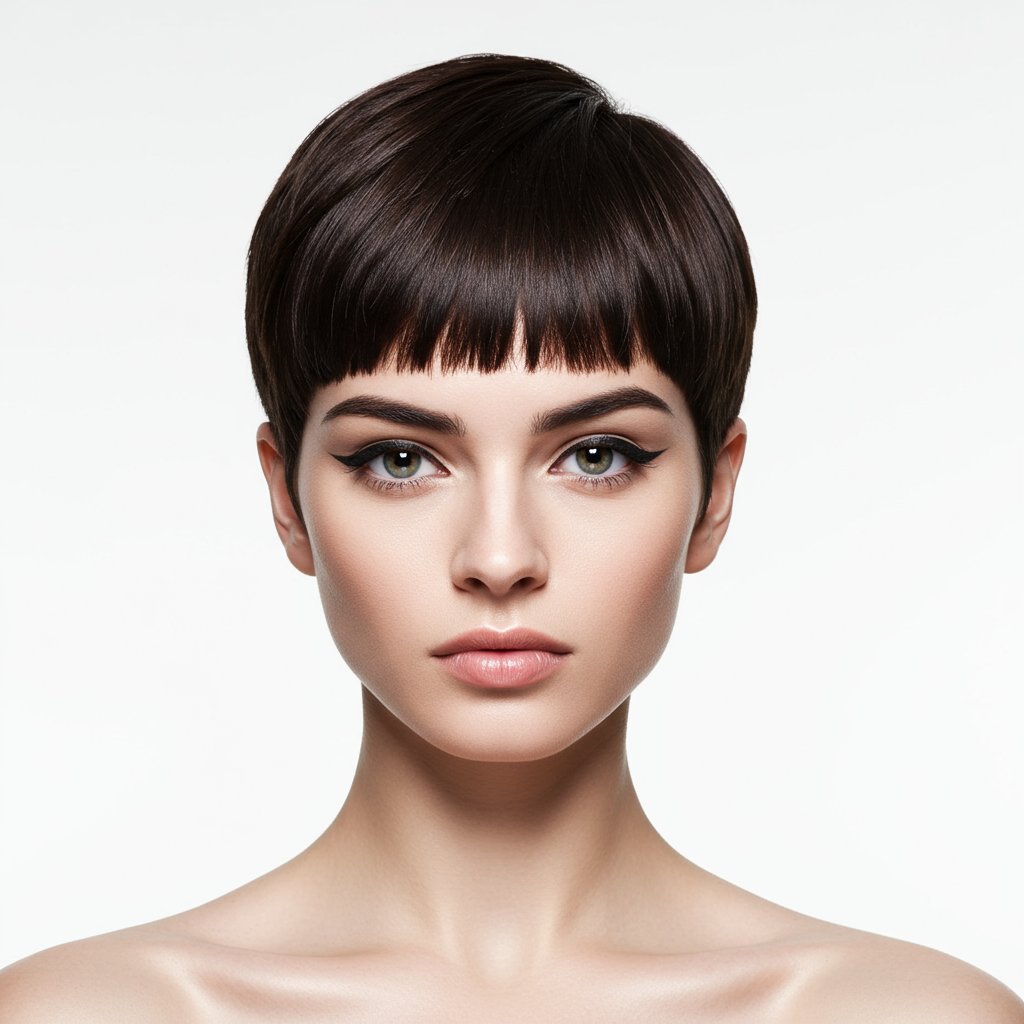
This era gave birth to some of the most iconic short haircuts in history. The five-point cut, an avant-garde graduated bob, was a technical marvel. But it was the pixie cut that truly captured the spirit of the decade. When actress Mia Farrow debuted her daringly short pixie for the film Rosemary's Baby in 1968, it became an instant sensation. This gamine, boyish style was the epitome of mod chic, highlighting the eyes and bone structure. It was a fresh, youthful, and liberating look that, thanks to Sassoon's techniques, relied on the perfection of the cut itself rather than elaborate styling. The '60s cemented the idea that a great haircut begins with an expert stylist and a masterful technique.
The Punk and Power Era: The 70s and 80s Rebellion
As the structured modernism of the '60s gave way to the eclectic freedom of the '70s and the bold excess of the '80s, short hair became a canvas for rebellion and self-expression. The polished geometry of Sassoon was deconstructed, replaced by texture, layers, and asymmetry. The 1970s introduced the shag, a unisex style popularized by icons like Jane Fonda and Joan Jett. While often worn longer, its shorter variations featured razored layers, feathery texture, and a rock-and-roll attitude that was effortlessly cool.
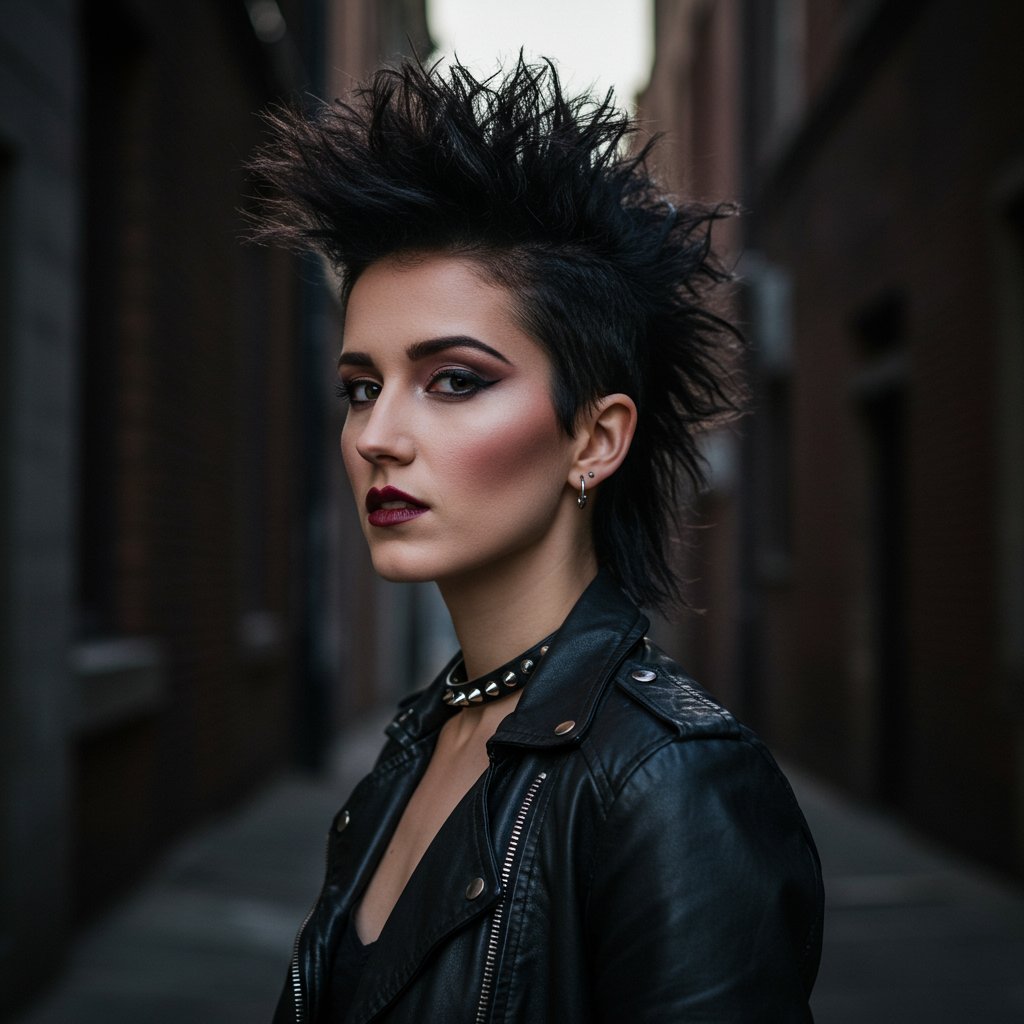
By the late '70s and early '80s, the punk movement took this rebellion a step further. Hair became anti-fashion, with DIY spikes, vibrant colors, and the rise of the mullet—short and choppy on top, longer in the back. At the same time, the power dressing of the 1980s demanded strong hair to match. Think of Annie Lennox's vibrant orange crew cut or Grace Jones's architectural flattop. These were not soft, feminine styles; they were androgynous, powerful, and designed to make a statement. Short haircuts for women in this era were about attitude, individuality, and breaking every rule in the book.
The 90s Minimalist & Androgynous Edge
The 1990s reacted to the extravagance of the '80s with a move towards minimalism, grunge, and a more understated androgyny. The supermodel era was in full swing, and short hair took on a chic, gamine quality. Linda Evangelista famously chopped her hair into a pixie, proving that short hair could be high fashion. But the defining short haircut of the decade belonged to actress Winona Ryder. Her piecey, elfin pixie was the epitome of '90s cool—effortless, a little bit messy, and undeniably stylish.
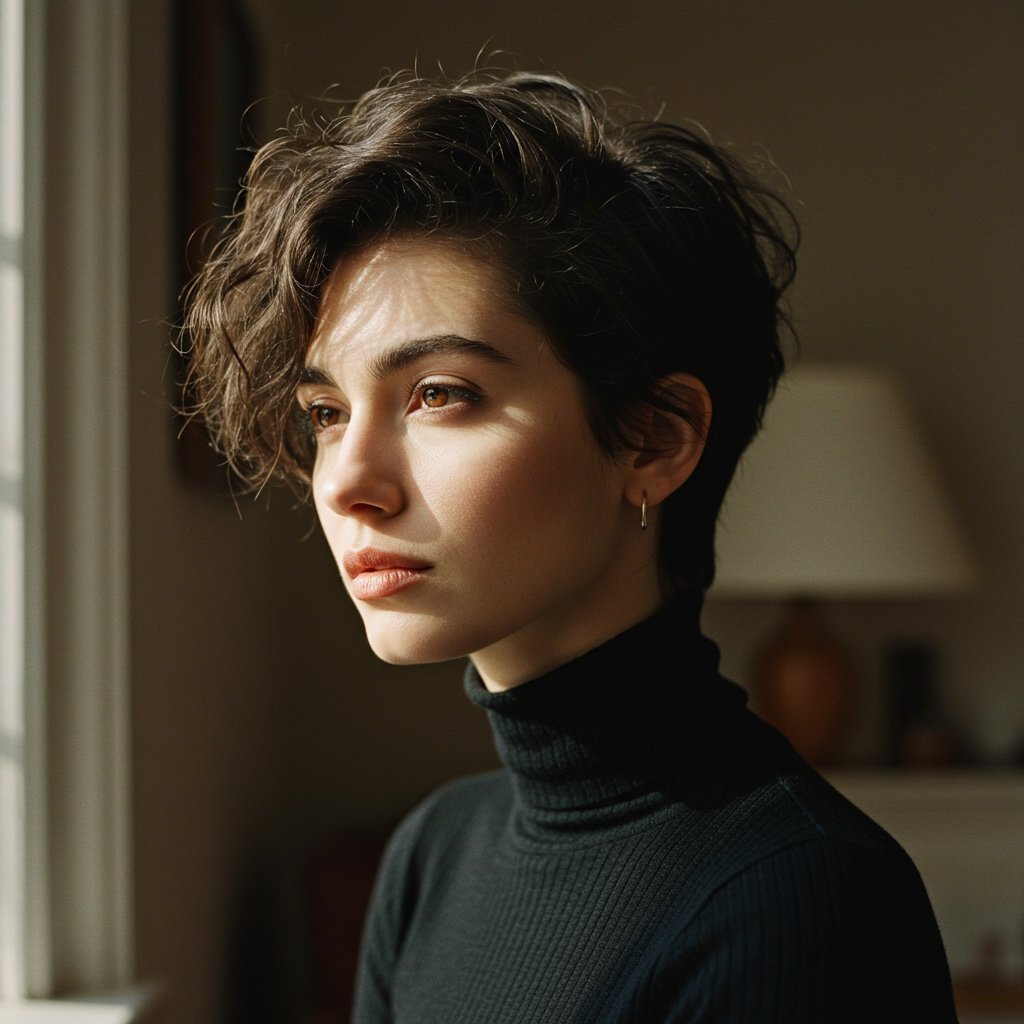
This era was less about precision and more about texture and movement. The cuts were often softer, with subtle layers that could be styled in various ways—tucked behind the ears, slicked back, or left slightly tousled. It was a departure from the rigid styles of the past, embracing a more natural and lived-in feel. This minimalist approach made short hair accessible and appealing to a wider audience, solidifying the pixie cut as a timeless staple that could be adapted to suit any personal style, from grunge to sophisticated chic.
The New Millennium: Texture, Asymmetry, and the 'Bixie'
The early 2000s ushered in an era of experimentation. As technology advanced, so did styling tools and products, allowing for more creative expression. Short haircuts for women became edgier and more personalized. Asymmetry was a major trend, with cuts that were longer on one side or featured dramatic, side-swept bangs. Pop stars like Rihanna and Victoria Beckham championed the asymmetrical bob (the 'Pob'), a sharp, angled cut that was shorter in the back and longer in the front, creating a bold and dynamic silhouette.

Texture was also key. Stylists used razors and point cutting to create choppy layers and shattered ends, moving away from the blunt lines of the past. This period also saw the birth of hybrid haircuts. The 'bixie'—a cross between a bob and a pixie—gained popularity. It offered the cropped convenience of a pixie in the back with the face-framing length of a bob in the front. This fusion of styles demonstrated a growing desire for customized haircuts that didn't fit neatly into one category, paving the way for the fluid and personalized trends of today.
Today's Fluidity: The Modern Mix of Short Haircuts
Today, the evolution of short haircuts for women has reached a beautiful apex of personalization and fluidity. There are no hard and fast rules. Instead, the focus is on celebrating individual hair texture, face shape, and lifestyle. Modern short hair is about embracing what makes you unique. We see a revival of classic styles reimagined for the contemporary woman, alongside entirely new hybrid cuts that defy simple categorization.

Popular trends include the 'French bob,' a chin-length cut with soft ends and a fringe that exudes effortless Parisian chic. The 'shob' (shaggy bob) and the 'mixie' (mullet-pixie) combine elements of different eras to create something fresh and modern, full of texture and movement. Undercuts and shaved sides continue to be a popular way to add an edge to any short style, while buzz cuts in bold colors are a powerful statement of confidence. The overarching theme is versatility—a great short cut from a skilled stylist can be styled sleek and professional, tousled and casual, or bold and avant-garde, perfectly reflecting the multifaceted nature of modern life.
Tips for Finding Your Perfect Short Cut
Choosing to go short is exciting, but finding the right cut can feel daunting. A successful short haircut is a collaboration between you and an experienced stylist. Here are some key factors to consider to ensure you find a style you love.

Consider Your Face Shape
While there are no strict rules, certain styles can enhance your features. For example, oval faces can pull off almost any short cut. Round faces often benefit from styles with height and volume on top, like a textured pixie or an asymmetrical bob, to add length. Square jawlines can be softened by wispy layers and curls, while heart-shaped faces look stunning with chin-length bobs that add fullness around the jaw.Work with Your Hair Texture
Your hair's natural texture is your greatest asset. Fine hair can gain the illusion of volume with a blunt bob or a structured pixie. Thick or coarse hair is great for layered styles that remove bulk and create shape, like a shaggy bob or an undercut pixie. If you have curly or wavy hair, embrace it! A skilled stylist can cut your curls in a way that enhances their natural pattern, creating a beautiful, low-maintenance shape.Factor in Your Lifestyle and Maintenance Commitment
A wash-and-wear pixie might be perfect for someone with a busy, active lifestyle. A sharp, geometric bob, on the other hand, may require more regular styling and frequent trims to maintain its precise lines. Be honest with your stylist about how much time you're willing to spend on your hair each day. A great cut should work for you, not against you. Regular trims, typically every 4-6 weeks, are essential for keeping any short style looking its best.
Frequently Asked Questions About Short Hair
1. Will short hair make my face look rounder?
Not necessarily. The right cut can actually be very slimming. Styles with volume on top, asymmetrical lines, or side-swept bangs draw the eye upward and create the illusion of length. A professional stylist can tailor a cut to flatter your specific face shape.
2. Is short hair harder to style than long hair?
It's different, not necessarily harder. While you can't rely on a ponytail, many short styles are incredibly low-maintenance, especially 'wash-and-wear' cuts. Styling often takes less time, but it does require more frequent trims to keep its shape. You'll likely trade a longer daily styling routine for more frequent salon visits.3. What products do I need for short hair?
Your product arsenal might change. A good texture paste or pomade is essential for defining layers in a pixie. A lightweight mousse can add volume to a bob, and a smoothing serum can tame flyaways for a sleek look. A heat protectant is always a must if you use hot tools.4. Can I get a short haircut if I have curly hair?
Absolutely! Short, curly hair is incredibly chic. The key is finding a stylist who is experienced in cutting curls. They will likely use techniques like dry cutting to work with your natural curl pattern, creating a shape that prevents the dreaded 'triangle' effect and celebrates your texture.5. How do I know if I'm ready for a big chop?
It's a big decision! Start by collecting inspiration photos of short haircuts you love on people with similar hair textures and face shapes. Talk it through with a trusted stylist. If you're hesitant, consider a gradual approach, starting with a long bob (lob) and slowly going shorter over time.6. How often will I need to get my short hair cut?
To maintain the shape and integrity of your style, plan on visiting the salon every 4 to 7 weeks. Pixie cuts and other very short styles are on the shorter end of that spectrum (4-5 weeks), while bobs can often go a bit longer (6-7 weeks).
Conclusion: Embrace Your Power, Embrace the Cut
The journey of short haircuts for women is a powerful narrative of style, identity, and liberation. From the defiant bobs of the 1920s to the artistic pixies of the '60s and the endlessly customizable styles of today, short hair has consistently allowed women to express their individuality and confidence. It's a testament to the fact that femininity isn't defined by length, but by attitude.
If you're considering a short haircut, remember that you're not just choosing a style; you're tapping into a rich history of bold, trailblazing women. The perfect cut is out there, waiting to be tailored to your unique features, texture, and personality. Consult with a professional stylist, explore your options, and don't be afraid to take the leap. A short haircut can be more than just a change—it can be a transformation.


